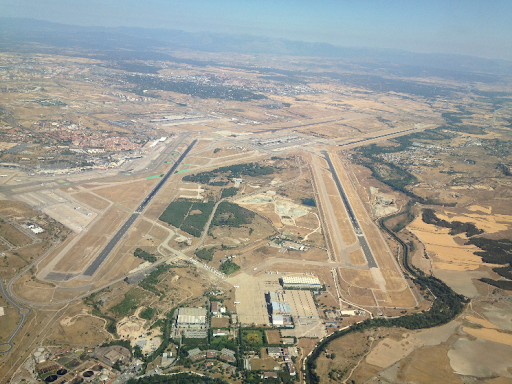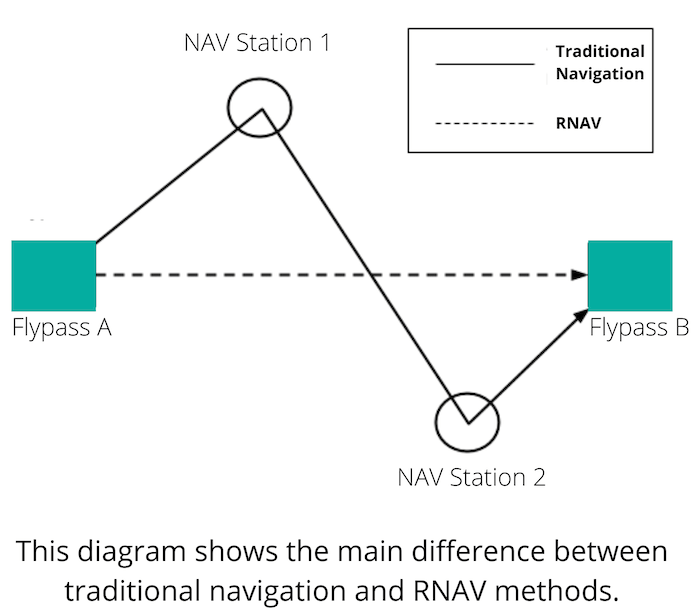Captain Judy’s Corner: Technological Historical Approach
Looking from the Citation jet cockpit, Charles de Gaulle international airport (CDG) was off our right wingtip. The city of Paris was off our left wing. Le Bourget airport (LFPB) was directly ahead. The stunning view took our breath away. We anticipated stepping back in time as we approached this famous airport. Le Bourget conjured up images of 1927 with a lanky, tousle-haired Charles Lindbergh climbing down from his gray monoplane having just completed his historic nonstop flight from New York City to Paris. We were about to make a technological historic approach.

Coming into Paris
As we approached LFPB, we could have been on any instrument landing system (ILS) in the world with exceptions based on terrain. De Gaulle approach control stated in a pleasing French accent, “Citation N178SF, cleared ILS runway 25, contact Le Bourget tower on 118.92.” This worldwide instrument approach consistency exists through the efforts of the International Civil Aviation Organization (ICAO). In 1941, the United Nations formed ICAO. As result, pilots and air traffic controllers enjoy worldwide standardization. Similarly, as technology changes the way we fly, ICAO continues to provide standardization that includes up to date instrument approaches. This also impacts security clearance.
Preparation
There are numerous types of approaches for landings. Student pilots begin with visual approaches by using ground references. Pilots must be able to operate aircraft with visual reference to the ground and visually avoid obstructions and other aircraft. Also, keeping a clear head is instrumental to safety. For example, if you’re wondering how many accidents occur during this phase of flight, you may be surprised. Nearly half of all commercial jet accidents occur on final, so this is an important part of flight training.
Student pilots also learn how to read approach charts and plates to receive clearance. A general definition for an approach is “the phase of flight when a flight crew begins its descent to land and ends as the aircraft crosses the runway threshold.” Pilots take safety measures during every phase of approach. During the landing process, passengers feel the plane reduce altitude, or step down. The plane then powers ahead followed by another step down. This is a common landing procedure. Aircraft flight manuals recommend correct speeds. Of course, these vary between heavy jumbo jets and light aircraft.
Most importantly, if the weather is less than visual flight rules (VFR) prescribe, pilots must use instrument flight rules (IFR). In other words, pilots operate aircraft by referencing the instruments rather than visual reference. As a result, IFR operations require specific training and certification of the pilot. Also, the aircraft is required have increased equipment requirements and certification. Above all, pilots must file an IFR flight plan.
Instrument approaches allow an instrument-rated pilot to transition from the flight to the approach in instrument meteorological conditions (IMC) and then to the landing. Epic students learn about and fly all three categories of instrument approaches in a simulator and aircraft.
Unlock Insights with Our 8-Minute In-Depth Approaches Video
Types of Instrument Approaches
- Precision Approaches (PA)
- Non-Precision Approaches (NPA)
- Approaches with Vertical Guidance (APV)
I. Precision Approaches (PA)
A Precision Approach (PA) is an approach in which pilots receive vertical and lateral guidance. Ground-based navigation aids or satellite-generated navigation data displayed in the cockpit deliver vertical and lateral guidance. Furthermore, ATC can also provide the pilot radar vectors to the runway. There are 3 types:
- The Instrument Landing System (ILS) is the most commonly available PA in the U.S. The ILS uses both a localizer and a glideslope ground-based signal that are transmitted to the aircraft receiver guiding pilots to the runway. Furthermore, FAR 91.175 explains the requirements for landing, such as flight visibility and approved visual references.
- Ground Based Augmentation System (GBAS) Landing System (GLS) approaches provide exact alignment and descent guidance to aircraft. To the pilot, GBAS/LAAS approaches look similar to ILS approaches. LAAS is based on GPS signals that are then supplemented by ground equipment.
- Precision Approach Radar (PAR) approaches involve radar and two-way radio communications. The controller provides the pilot headings, altitudes, and necessary corrections to remain on course. The military mostly uses PAR approaches in the United States.
II. Non-Precision Approaches (NPA)
Non-Precision Approaches (NPA) are standard instrument approach procedures with only lateral guidance from the localizer signal. Vertical guidance is not provided. There are 8 types:
1. Area Navigation
Area Navigation (RNAV) approaches use the Global Navigation Satellite System (GNSS), or GPS. RNAV approaches are becoming more common due to the wide use of GPS. An aircraft must be equipped with the appropriate Wide Area Augmentation System (WAAS) GPS receiver to conduct the RNAV approach. RNAV approaches vary on capabilities. For example: LNAV (lateral navigation); LNAV +V (lateral navigation with advisory glide slope); LNAV/VNAV (lateral/vertical navigation). Some RNAV approaches will also have LPV (localizer performance with vertical guidance) known as APV approaches.
2. Localizer Performance
Localizer Performance (LP) approaches are non-precision approaches with WAAS lateral guidance. Vertical guidance to the runway is not provided. Furthermore, the LP approaches are located where terrain or obstructions do not allow a vertically guided procedure. In order to conduct an LP approach, the aircraft must be equipped with the appropriate Wide Area Augmentation System (WAAS) GPS receiver.
3. Very-High Frequency Omnidirectional Range
Very-High Frequency Omnidirectional Range (VOR) approaches use a ground-based signal transmitting an omni-directional radial. VOR signals are line of sight due to terrain blocking. Also, the VOR radials have a range limit, depending on the type of VOR ground device. The U.S. has been decommissioning many VORs. However, pilots must retain skills on flying a VOR approach, because many countries still use VOR.
4. Non-Directional Beacon
Non-Directional Beacon (NDB) approach is a ground-based, low frequency radio transmitter. The NDB transmits an omni-directional signal received by an Automatic Direction Finder instrument onboard the aircraft. NDBs are being phased out of air navigation in the U.S. with a few remaining. Although there are fewer NDB approaches worldwide than VORs, pilots should maintain their NDB approach skills.
5. Localizer
Localizer (LOC) approaches utilize only the localizer equipment of the instrument landing system (ILS) and not vertical guidance to the runway. Aircraft must be equipped with a navigation receiver. ILS and localizer signals share the same ground-based equipment.
6. Approach Surveillance Radar
Approach Surveillance Radar (ASR) approaches are similar to the PAR. However, they don’t provide vertical guidance. As a result, when conducting an ASR approach, ATC guides the pilot laterally giving heading assignments or corrections.
7. Localizer Type Directional Approach
Localizer Type Directional Approach (LDA) is used where the approach is offset from the runway 6-12 degrees. The LDA uses the ground-based transmitter from an ILS but not a complete ILS signal. In order to fly the LDA approach, the aircraft must be equipped with a navigation receiver.
8. Simplified Directional Facility
Simplified Directional Facility (SDF) approaches are similar to the ILS localizer. Aircraft must be equipped with a navigation receiver to fly this approach. Above all, the course may not be aligned with the runway and may be wider. As a result, there may be less precision.
III. Approaches with Vertical Guidance (APV)
Approaches with Vertical Guidance (APV) is based on a navigation system that does not meet the ICAO precision approach standards. APV approaches provide course and glidepath deviation information. Most importantly, aircraft must have a WAAS receiver to fly these approaches. APV approaches are more accurate than RNAV approaches. Therefore, pilots are able to fly lower cloud and visibility minimums. APV types of approaches include: Localizer Performance with Vertical Guidance (LPV) and LNAV/VNAV.

Memorable Approaches
I have flown VFR and IFR approaches all over the world. A few of my more memorable experiences were flying a C172 in Spain, a Yak in England, the Mooney throughout Asia and the Middle East, and the Citation jet around the world. Regardless of the countries, the approaches were standardized, providing greater safety through consistency.

Enjoy the rewarding process of learning the skills for flying instrument approaches and maintaining those skills. As a result, you’ll fly confidently anywhere in the world!
Videos of Approaches
Epic Flight Academy has created videos to help you understand various approaches. Check out these popular topics:
- Precision and Non Precision Approaches
- Short Field Approaches and Landings
- VFR Holds and Approaches Filing Tutorial
- Emergency Approach to Landing in the Traffic Pattern
- Students Flying a GPS Approach

Read more articles by Captain Judy Rice!
What were some of your memorable approaches? Please share below… I’d love to hear from you!


I think there should be further clarification that for an RNAV approach you don’t need to have WAAS. You need WAAS for the APV/LPV/LNAV VNAV. Besides that, this helped clarify some things.
Thanks for the suggestion!
Thank you for the useful information
Very nicely explained. Thanks
At first I was very confused in approaches..now everything is crystal clear.Thanks a lot
WOW! Thank you so much for this post. VERY CLEAR AND HELPFUL.
Seriously I just had a ground for approach this morning. I didn’t understand quite well, but once I read this post. Boom. it all makes sense. Thank you!!!!
Thank you so much for your comment. We’re glad to hear you found this post useful and informative!